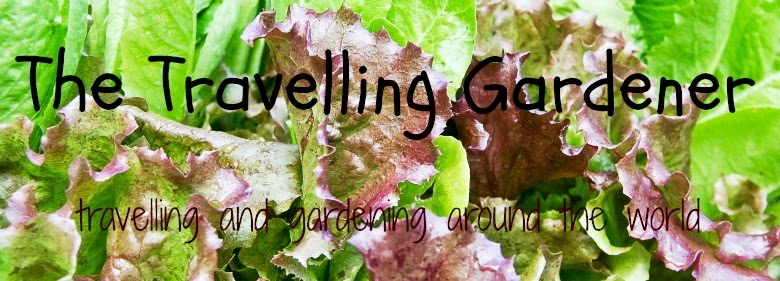It is the time of the year that I think about saving seeds of my favourite flowers and vegetables.
Saving seeds from flowers like Calendula, Holly hocks, Columbine, Black eye Susan, Poppies, Sunflowers etc, is as easy as letting the flower heads go to seed on the plant and collecting the seeds when they have matured and dried off, which is about 5-6 weeks after the flower was in bloom.
At this time of the year, every few days I go into the garden armed with paper bags or small plastic containers, and either snip the dried brown seed head off the plant into the bag, or in the case of poppies and columbines, just shake the seed head into the bag. Don't forget to label the container.
I take these seed heads and dry them for a few more days in a warm spot inside, in an open container or on a paper towel and then separate the seeds from the seed pod. I don't get too fussy with getting rid of all the remnants of the seed pod. Put them in a small bag (I use a small paper envelope), and label them with the variety, colour and year collected. Store them in a cool dark, dry place.
Over the next few weeks I'll get enough seed for the next season or so.
Vegetable seeds take a little more work, but not much.
For veges like arugula, lettuce, cilantro and parsley, I treat them as above. That is I let the plants go to flower, then wait til after the flower heads have dried off on the plant then harvest the seed.
Peas and Beans are much the same. Wait until the beans and pea pods are nice and fat and have started to dry off on the vine. Then they can be harvested, and brought inside to continue drying for a few more days in the pod. After the pod is very dry, they can be shelled and put into their labelled containers and stored. I usually end up with many jars of dried peas and beans. They are good for cooking with. The trick is to not eat them all and save enough for the next seasons planting.
Chilies if they are thin skinned can be dried intact. In Canada I grow my chilies in pots, so I can bring them inside when it gets too cold for them outside. This means that when I leave Canada in the fall I can store the plant pot and all in an out of the way dry corner, and let the whole plant die off and dry up. When I return to Canada in the spring the chili fruit have turned red and are dry, and ready to be ground up for use. They can also be harvested when they are starting to turn red and strung up on a thread and hung around the kitchen to dry. This way they look good and are right there when you need them.
Once the chilies are dried, the end can be snipped off and the seeds tipped out and stored.
For thick skinned peppers, cut the mature pepper in half, scrape out the seeds and dry them on a paper towel for a few days.
Squash and Cucumbers need to be grown in the garden til they have produced mature seeds inside. For summer squash and cucumbers this means until they are way past the eating stage, and the skin has become thick and hard. Then it is a case of breaking open the fruit and scooping out the seeds and drying them on a paper towel.
Tomatoes can be a bit more tricky or not. The way some say to collect tomato seeds is to scoop the seeds from the ripened tomato, and put this fleshy mix into a jar with a little water in it. Shake this mix a few times a day for 3-5 days until the gelatinous flesh has separated from the seeds, and the mixture is starting to ferment. Pour off the fleshy liquid, and rinse the seeds well and dry them on a plate or paper towel. I used to do this, but now I just scoop the seeds onto a paper towel, flesh and all and by-pass the soaking part. I end up with seeds that are perfectly fine for planting the next year. The seeds tend to stick to the paper towel, but if they are spread thinly enough on the towel, you can tear off the paper towel attached to that seed and plant it towel and all.
Once the seeds have been collected and labelled, they can be stored in a cool, dry, dark place ready for the next seasons round of planting.









































